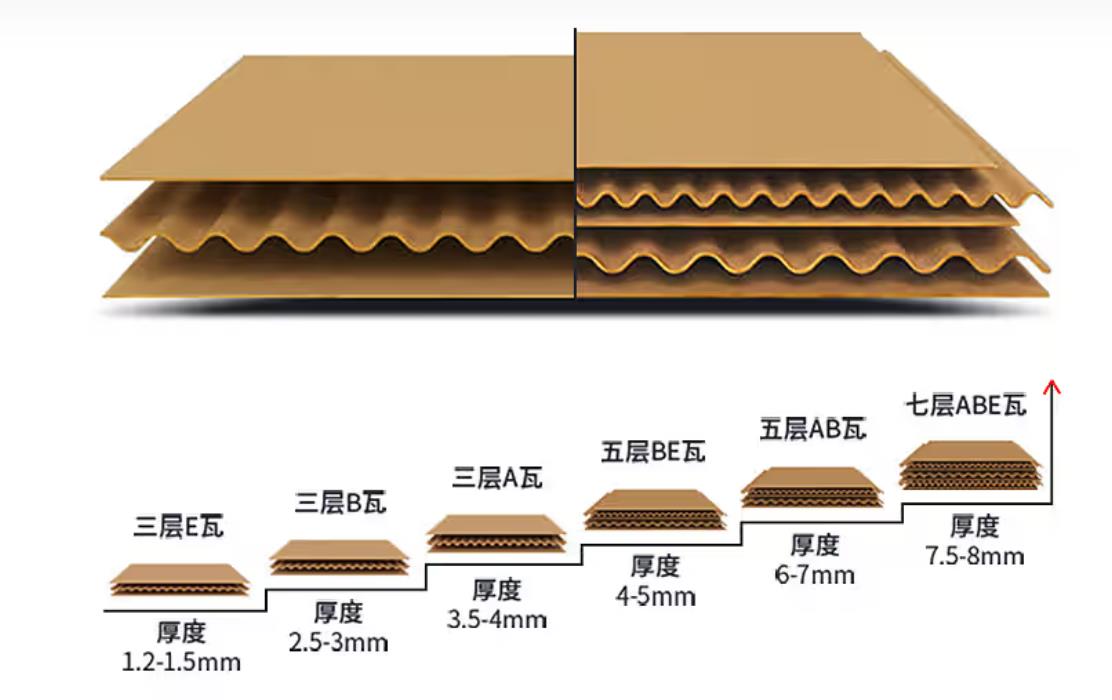Understanding Corrugated Cardboard Flute Types and Their Applications
Corrugated cardboard comes in various flute types, each suited to different packaging needs. The four main flute types are A flute, B flute, C flute, and E flute. Here's a brief overview of these flute types and their applications:
Three-Layer Corrugated Carton
- Structure: Consists of a single corrugated core sandwiched between two flat liner papers.
- Flute Types: Includes A, B, C, and E flutes.
- E Flute: Known as micro-corrugated, ideal for small, delicate items like household appliances.
- B Flute: Commonly used in the food and beverage industry for its balance of cushioning and rigidity.
Five-Layer Corrugated Carton
- Structure: Features two outer liners, two corrugated cores, and an inner liner.
- Flute Combinations: Often includes AB, AC, BC, or BE types.
- Use: Suitable for single-piece items that are light but prone to damage, providing additional strength and protection.
Seven-Layer Corrugated Paper Box
- Structure: Comprises three outer liners, three corrugated cores, and an inner liner.
- Flute Combination: Typically uses BAC type.
- Use: Ideal for heavy goods like motorcycles, offering robust protection for high-impact items.
Flute Characteristics:
- A Flute: Provides excellent cushioning due to its high profile and large spacing, making it ideal for fragile items needing extra impact resistance.
- B Flute: Offers rigidity with minimal shock absorption, suitable for products like canned food and small hardware.
- C Flute: A balanced option combining the properties of A and B flutes, providing both rigidity and cushioning.
- E Flute: Known for its flat surface and better rigidity, making it ideal for high-quality printing and space-efficient storage.
Choosing the right flute type ensures optimal protection and efficiency for your packaging needs.



